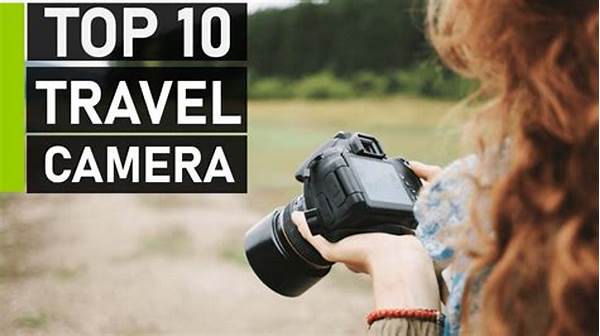Hey there, photography lovers and budding portrait artists! Today, we’re diving deep into a game-changer topic that could transform ordinary photos into stunning masterpieces—portrait lighting camera settings. Whether you’re a newbie or an experienced photographer wanting to spice up your game, understanding the right settings can make all the difference in capturing every smile, twinkle, and wink impeccably.
Read Now : Instant Pet Photography Hacks
Understanding the Basics of Portrait Lighting Camera Settings
When it comes to portrait lighting camera settings, think of them as the secret formula that brings out the model’s true essence. It’s not just about snapping a photo; it’s about crafting an image that tells a story. The key here is finding the perfect balance between your camera settings and the lighting available.
The exposure triangle—ISO, aperture, and shutter speed is your best friend. For a smooth, creamy background (aka bokeh), you’ll want a wide aperture, maybe around f/1.8 to f/2.8. This makes your subject pop while the background softly blurs. Keep an eye on your ISO; lower settings like ISO 100 help reduce noise. When your lighting isn’t optimal, don’t be afraid to adjust it, but not too high—you want clarity, not grain! Lastly, shutter speed should be adjusted to your lighting; bright conditions allow for faster speeds, freezing any motion and capturing sharp details.
Essential Portrait Lighting Camera Settings Tips
1. Use natural light when possible, positioning your subject near a window.
2. Experiment with backlighting for an ethereal glow.
3. Softboxes can create a subtle effect without harsh shadows.
4. Golden hour light is your best friend for warm, dreamy portraits.
5. Don’t forget to use a reflector to bounce some light back to your subject.
Mastering Advanced Portrait Lighting Camera Settings
For those of you ready to level up, let’s chat about more advanced portrait lighting camera settings. Off-camera flash can seem intimidating, but it’s a total game-changer. By controlling the light source, you aren’t limited to what the environment offers, giving you creative freedom.
Important note: flash settings. Experiment with TTL (Through The Lens) mode for automatic adjustments or Manual mode for complete control. Combining flash with ambient light can lead to beautiful outcomes by balancing the two light sources. With Manual mode, you have the liberty to tweak the flash power and aperture independently, resulting in artistic and mood-enhancing portraits. Remember to always sync your camera and flash to prevent unsightly shadows and exposure discrepancies.
Read Now : Mastering Artistry In Photo Retouching
The Role of White Balance in Portrait Lighting Camera Settings
When we dive into portrait lighting camera settings, one can’t forget about setting the right white balance. It makes sure colors are true to life and brings natural tones to your shots. Auto white balance might do the trick, but sometimes it’s a bit wayward.
Best Practices for Portrait Lighting Camera Settings
Making the Most of Portrait Lighting Camera Settings: A Deeper Dive
Let’s paint a scenario. Imagine you’re in a lush, vibrant garden taking portraits at the golden hour. The light is perfect, but when you snap that pic, something’s off! Maybe the colors don’t pop or there’s a weird shadow. This is where mastering portrait lighting camera settings comes to save the day.
The beauty of these settings lies in their flexibility. Adjusting ISO to cope with lower light or tweaking shutter speed to freeze movement can radically change the feel of your image. Don’t shy away from mixing ambient light with artificial sources; it can add depth and dimension your photos desperately need. Remember, capturing that perfect portrait is about finesse, and refining settings is part of the artistic process.
Creativity and Experimentation in Portrait Lighting Camera Settings
Alright, folks, ready for some real talk? Portrait lighting camera settings are not a one-size-fits-all deal. They’re like seasoning your food; a pinch of this and a dash of that can completely change the flavor of your image. It’s all about experimenting, making mistakes, and learning.
Got a favorite setting or a quirky lighting trick? Share it around! Photography is an art that thrives on collaboration and creativity. Mix things up! Try different angles, play with shadows, and remember—when in doubt, take a step back, inhale deeply, and shoot again. Often the best pictures happen when you’re just having fun and trying unexpected things.
Bringing It All Together: Final Thoughts
In summary, becoming a pro with portrait lighting camera settings means embracing trial and error. You’ll make a few boo-boos, sure, but that’s the learning curve. It’s crucial to be patient and persist because these skills are like digital wizardry for breathtaking portraits.
Keep snapping, stay creative, and most importantly, enjoy the journey. Surprising revelations often come from the most unexpected places and setups. Even seasoned photographers discover new tricks as they go along. So grab your camera, test those settings, and get ready to create some magical portraits!



